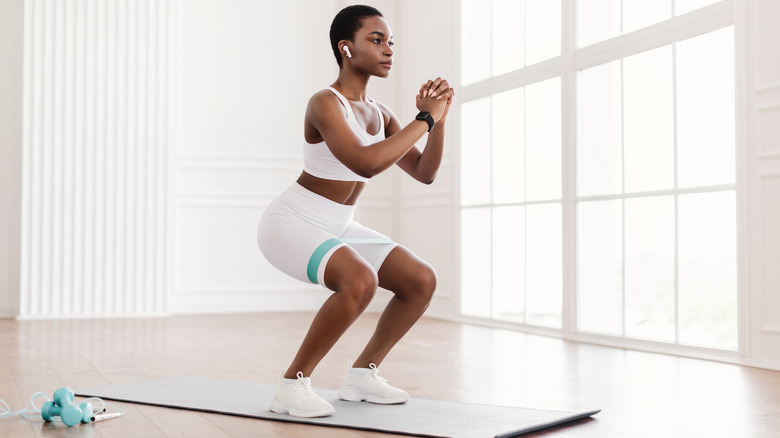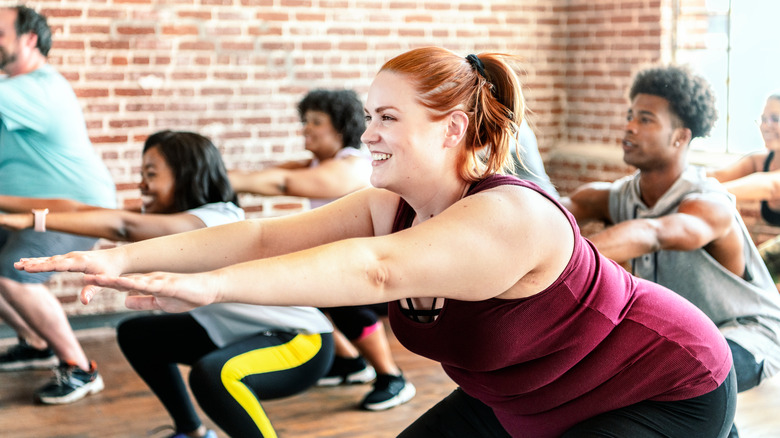How Are Pulse Squats Different From Regular Squats?
Some people squirm when leg day hits and squats are on the workout list, while others thrive off the movement of squats. Even if legs aren't your favorite body part to train, don't skip squats on leg day. According to Medicine Net, strength-based exercises like squats boost metabolism more than cardio, strengthen hip and core muscles, and can increase self-esteem. Instead, switch up your leg day routine to incorporate some pulse squats which target your muscles differently than regular squats.
Pulse squats are a great fat-burning exercise and leg workout. This alternative is slightly different from squats because the movement forces you to pulse up and down from a deep squat position, while standard squats return to a standing position between each rep. Tim Brown, owner of The Fitness Factory Studio of Jackson and certified personal trainer, told LiveStrong in an interview, "It is essential to use the different squat variations to see changes and target different areas of the leg muscles."
Holding a deep squat position causes the muscles to fatigue. When that sensation hits, it's a tell-tell sign that your muscles are working hard, which burns calories and strengthens your lower body, core, and lower back.
Here's how to properly squat pulse
Before attempting a squat pulse, make sure you can properly perform a deep squat. After you've warmed up with a couple of regular squats, pick the amount of sets and repetitions you'd wish to perform. Aim to select an amount based on your confidence level around completing the exercise with good form, states Masterclass. For instance, start with 2-3 sets of pulse squats, each with 8-15 repetitions.
Once you've decided on your sets and reps, it's time to get to work. Start by standing with your feet shoulder-width apart. Make sure your weight is distributed evenly across your feet, let your feet grip the floor, then inhale and start hinging at the hips. Move downward by bending your knees and ankles like you're about to sit in a chair. Tighten your core muscles and make sure your knees don't spill out over your toes or cave in, points out Percell Dugger, a certified strength and conditioning coach, to LiveStrong. Exhale, then raise your body about 1-2 inches up from this squat position using your feet to push you upward, per Masterclass. Drop back down 1-2 inches using your legs, and repeat this up and down motion. Each time you go up and down counts as 1 repetition. Once you're done, make sure to hydrate and recover after this intense workout.


